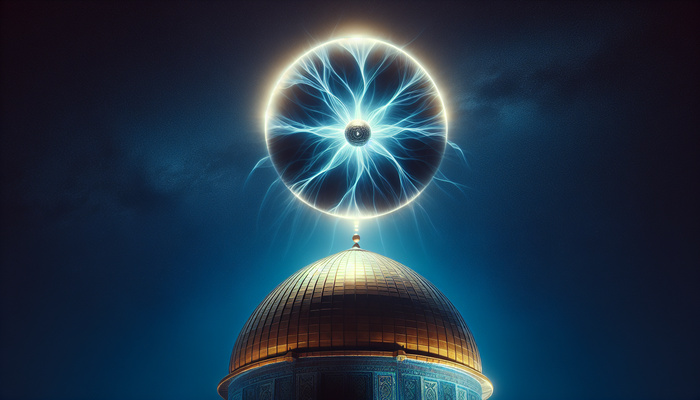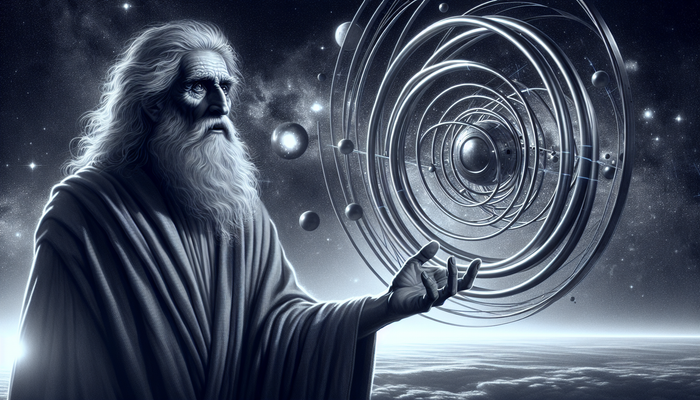Intergalactic Travel: The Ultimate Frontier

By Sanjay Kapoor, Ufologist
Look up at the night sky, beyond the familiar constellations and the ghostly arm of the Milky Way, and you're peering into the greatest wilderness humanity may ever face: intergalactic space. While we've sent probes to the edges of our solar system and contemplated journeys to nearby stars, intergalactic travel represents something altogether more ambitious—crossing the vast gulfs between entire galaxies, each containing hundreds of billions of stars.
It's a dream that makes interstellar travel look like a weekend road trip. But is such a journey even possible? What would it take for humanity to embark on the ultimate expedition?
The Cosmic Atlas: Understanding Our Galactic Neighborhood
To grasp the challenge of intergalactic travel, we must first comprehend the almost inconceivable distances involved.
Our Milky Way galaxy—home to our solar system and roughly a trillion stars—spans about 100,000 light-years from edge to edge. That means light, the fastest thing in the universe, takes 100,000 years to cross it. But this enormous galaxy is just one island in a vast cosmic sea.
The closest major galaxy to our own is Andromeda, sitting approximately 2.54 million light-years away. In between are dozens of smaller satellite galaxies, including the Large and Small Magellanic Clouds, visible from the Southern Hemisphere as fuzzy patches of light.
NASA scientist Dr. Les Johnson offers a striking analogy to help us visualize these distances: "If we were to scale down the Earth-Sun distance to one meter, Neptune would be about 30 meters away. On this same scale, the nearest star, Alpha Centauri, would be 276 kilometers distant."
And Andromeda? Using this same scale, it would be nearly 17 million kilometers away—43 times the distance to the Moon.
Beyond our Local Group of galaxies lies what astronomers call the "Council of Giants"—twelve large galaxies forming a rough ring around us. The nearest member of this illustrious council, the Sculptor Galaxy, sits 11 million light-years distant. The farthest, the appropriately named "Evil Eye Galaxy," is 17 million light-years away.
Our fastest spacecraft, Voyager 1, is currently traveling at about 17 kilometers per second (38,000 mph). At this speed, reaching the nearest star would take 74,000 years. Reaching Andromeda would require 150 million years—longer than mammals have existed on Earth.
The Physics of Intergalactic Travel: Cosmic Speed Limits
"Nothing with mass can move at the speed of light" isn't just a theoretical concept—it's a fundamental barrier to intergalactic travel. The reason for this limitation becomes clearer with a simple analogy: imagine pushing a wheelbarrow.
Initially, the wheelbarrow contains just its own weight—the frame and tires. As you add speed, you're essentially adding mass to that wheelbarrow, making it harder to push. Eventually, you'd have a mountain in your wheelbarrow, requiring enormous energy to accelerate further. This is precisely what happens as objects approach light speed—their effective mass increases dramatically, requiring virtually infinite energy to reach light speed itself.
But Einstein's theories offer a fascinating twist—time dilation. For travelers moving at relativistic speeds (close to the speed of light), time passes more slowly relative to stationary observers. At 86.6% of light speed, time on a spacecraft passes at half the rate as on Earth. At 99.9% of light speed, every year aboard the spacecraft corresponds to 22 years passing on Earth.
This means that, theoretically, humans could travel to Andromeda within a single lifetime—from their perspective. With continuous acceleration at 1g (the same gravity we feel on Earth), travelers would reach Andromeda in about 28 subjective years. The catch? Upon arrival, over 2.5 million years would have passed on Earth. Every human they knew, every civilization they left behind, would be long gone—a sobering form of one-way time travel.
The expanding universe presents another obstacle. As physicist Avi Loeb has calculated, the universe's accelerating expansion means distant galaxies are moving away from us faster and faster. For every billion light-years a galaxy is currently away from us, we need an additional 7% of light speed just to counter this cosmic expansion.
This creates an absolute horizon for intergalactic travel—no matter how fast we could theoretically travel or how long we wait, some galaxies will eventually become unreachable because they're receding faster than we could ever catch up to them.
Propulsion Systems: Powering the Ultimate Journey
Chemical rockets like those that took humans to the Moon are woefully inadequate for intergalactic travel. Even nuclear thermal propulsion, while more efficient, falls far short of the velocities needed.
More promising options include:
Nuclear Pulse Propulsion
Originally conceived in the late 1950s as Project Orion, this concept would use controlled nuclear explosions to propel a spacecraft. Freeman Dyson, a key member of the project, calculated that an advanced version could potentially reach 5-10% of light speed. "The idea is basically this," Dyson explained, "you could take a submarine, a big submarine, hermetically sealed with air inside, crew inside, stand it up vertically on a pad, and underneath it, put a huge steel plate and big shock absorbers that connect the two. And for the shock absorbers, I had an idea of what those might have looked like on a recent trip to Tokyo where I was in their national museum, the Tokyo Edo Museum, which is basically built up on big shock absorbers." Then, beneath that steel plate, you'd detonate small hydrogen bombs every few seconds to propel the craft upward.
Antimatter Propulsion
Matter-antimatter annihilation represents the most efficient reaction possible, converting matter directly to energy according to Einstein's E=mc². A propulsion system based on this principle could theoretically reach speeds of several tens of percent of light speed.
The challenge? Antimatter is extraordinarily difficult to produce and store. As one researcher colorfully noted, "a thimble full of antiprotons poured onto a table would probably destroy most of London in the energy released." Currently, global antimatter production is measured in nanograms per year, while intergalactic travel would require metric tons.
Beamed Propulsion
Rather than carrying fuel, a spacecraft could be pushed by powerful laser beams directed from the home solar system. Light sails—large, ultra-thin reflective surfaces—would capture the momentum of photons from these lasers. The Breakthrough Starshot initiative is currently developing similar technology for interstellar missions.
Hypervelocity Stars
One of the more fascinating possibilities involves "hitching a ride" on stars that are already traveling fast enough to escape their home galaxies. First theorized in 1988 and observed in 2005, these cosmic speedsters are ejected from galaxies by interactions with supermassive black holes or supernova explosions. A civilization could potentially establish colonies on planets orbiting such a star, or construct habitats around it, and simply wait as it carries them to another galaxy.
Beyond Light Speed: Bending the Rules of Reality
While Einstein's Special Relativity prohibits faster-than-light travel, General Relativity—his theory of gravity—offers some theoretical loopholes.
The Alcubierre Drive
Proposed by physicist Miguel Alcubierre in 1994, this concept doesn't actually break the light-speed barrier for the ship itself. Instead, it would contract space in front of the ship and expand it behind, essentially allowing the ship to "surf" on a wave of spacetime.
Imagine a rug with a small object on it. Rather than moving the object across the rug, you could create a wave in the rug itself, allowing the object to ride that wave. The object never exceeds the speed limit locally, but the distortion in the fabric can move at any speed.
The main obstacle? The Alcubierre drive would require "negative mass" or "exotic matter" with negative energy density—something we've never observed and may not exist. It would also require enormous amounts of energy, potentially more than exists in the observable universe.
Wormholes
Wormholes represent another possibility—theoretical tunnels through spacetime that could connect distant points in the universe, potentially allowing instantaneous travel between galaxies billions of light-years apart. While mathematically permitted by Einstein's equations, they would also require exotic matter with negative energy to remain stable and traversable.
As physicist Kip Thorne once noted, "The laws of physics do not rule out the possibility of creating and maintaining traversable wormholes... But the technology required may be beyond human capability for many thousands of years, if not forever."
Vessel Designs: Ships for Million-Year Missions
Even without faster-than-light travel, intergalactic journeys might still be possible—but they would require fundamentally rethinking what a "spacecraft" means.
Generation Ships
These would be mobile civilizations—enormous, self-contained habitats where multiple generations of humans would live and die during the journey, with only distant descendants arriving at the destination.
Such vessels would need to be essentially artificial planets, providing not just the physical necessities of life but also stable social, cultural, and psychological structures over thousands or millions of years.
How many generations might pass during such a journey? If we trace human civilization back to our first written records, we cover perhaps 200 generations. An intergalactic journey at 10% of light speed could span thousands of generations—longer than recorded human history.
Suspended Animation
Another possibility involves placing travelers in some form of hibernation or stasis, slowing biological processes to extend lifespan through the journey. While current technology is far from allowing true suspended animation, future breakthroughs might make it possible to drastically slow metabolism and aging.
Digital Immortality
Perhaps the most radical approach would be to abandon biological bodies entirely. If human consciousness could be uploaded into digital substrates, "travelers" might exist as information patterns—experiencing the passage of millions of years as mere moments.
Star System Ships
The ultimate expression of this concept might be converting entire star systems into mobile spacecraft. Using techniques like "star lifting" to harvest material from a star, advanced civilizations might construct engines capable of moving entire solar systems through intergalactic space at perhaps 20-30% of light speed.
The Million-Year Machine: Engineering Challenges
Building any vessel capable of surviving a million-year journey presents unprecedented engineering challenges. How do you create materials that won't degrade over geological timescales? How do you design computers and AI systems that remain stable for epochs?
The vessel would need to be virtually indestructible, capable of self-repair, and protected against the hazards of intergalactic space. Even tiny particles of dust become catastrophic hazards at relativistic speeds—a collision with something the size of a pea could release energy equivalent to multiple nuclear weapons.
Power generation presents another monumental challenge. Nuclear fusion might work for interstellar journeys of a few decades or centuries, but what power source lasts millions of years? One exotic possibility involves using micro black holes, harnessing their Hawking radiation as an essentially eternal energy source.
Then there's the question of navigation. During a million-year journey, the positions of stars and galaxies would shift significantly. The cosmic map the travelers depart with would become increasingly obsolete as they traveled. Any intergalactic vessel would need sophisticated systems to continually recalculate its course based on changing celestial positions.
The Cosmic Perspective: Philosophical Implications
Intergalactic travel forces us to confront profound questions about humanity's future and our place in the cosmos.
Russian astrophysicist Nikolai Kardashev proposed a scale for measuring civilizations based on their energy usage:
- Type I civilizations harness the energy of their entire planet
- Type II civilizations harness the energy of their star
- Type III civilizations harness the energy of their galaxy
By this measure, humanity is currently a Type 0 civilization—we haven't yet harnessed our planet's full energy potential. True intergalactic travel would require at least Type II status, with some concepts necessitating Type III capabilities.
The timeframes involved also raise existential questions. If a civilization launches an intergalactic mission that will take millions of years, what becomes of the travelers? Would they still be "human" in any recognizable sense by the time they arrived? Would they even remember Earth, or why they began their journey?
As science fiction author Liu Cixin wrote in "The Three-Body Problem": "The universe is big. Time is long. But to us, they're finite. So, in a sense, the entire universe exists for us."
The ethics of cosmic expansion present another dimension. Some researchers argue for a "Prime Directive" approach—studying but not interfering with worlds that harbor indigenous life. Others suggest that spreading life throughout an otherwise dead cosmos might be a moral imperative.
"To the best of our knowledge, Earth is the only place in the universe harboring sentient biological life," one researcher noted. "This miracle of life is beautiful. It's a miracle of nature and evolution... and life is inherently good and needs to be protected, preserved, and spread."
Whether humanity ever launches true intergalactic missions or not, the very concept stretches our imagination and understanding in valuable ways. It forces us to think beyond our usual human timescales, to consider not just what humanity is now, but what it might become over millions or billions of years of continued evolution and development.
The journey toward intergalactic travel has already begun—not with actual launches, but with the theoretical work and technological stepping stones that might one day make it possible. NASA's Voyager probes have left our solar system, entering interstellar space. The Breakthrough Starshot initiative is developing technology for interstellar missions. Solar sail development continues to advance, with each generation approximately ten times larger than the previous one.
Will we ever send ambassadors to Andromeda or beyond? The answer remains uncertain. But the very act of contemplating such journeys enriches our understanding of physics, expands our vision of the future, and connects us to the vastness of the cosmos in ways our ancestors could never have imagined.
In the words of physicist Freeman Dyson: "The vision of the future as an infinite playground, with an unending sequence of mysteries to be understood by an unending sequence of players exploring an unending supply of information, is a glorious vision for scientists. Scientists find pleasure in exploring the universe. I hope that vision may inspire others."
As we continue to peer into the depths of intergalactic space through our telescopes, we're reminded of both our limitations and our potential—and the extraordinary journey that lies ahead for humanity if we continue to reach for the stars... and the galaxies beyond them.
From Bigfoot to UFOs: Hangar 1 Publishing Has You Covered!
Explore Untold Stories: Venture into the world of UFOs, cryptids, Bigfoot, and beyond. Every story is a journey into the extraordinary.
Immersive Book Technology: Experience real videos, sights, and sounds within our books. Its not just reading; its an adventure.


























